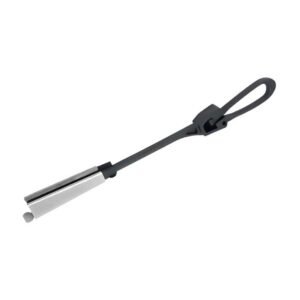XFP Optical Transceiver
The XFP Optical Transceiver is a hot-pluggable transceiver module that is designed to transmit and receive data over a single fiber optic cable. It is compliant with the IEEE 802.3ae 10 Gigabit Ethernet standard and supports a data rate of up to 10 Gbps. The XFP Optical Transceiver is available in a variety of configurations, including single-mode, multi-mode, and dual-mode.
Description
XFP Optical Transceiver – High-Performance 10 Gigabit Ethernet Solution
Features
- Hot-pluggable XFP MSA compliant module
- Supports 10 Gigabit Ethernet applications over single-mode fiber optic cable
- Transmission distance up to 80 km
- Duplex LC connector
- Metal housing for enhanced EMI/RFI performance
- Low power consumption
- RoHS compliant
Applications
- 10 Gigabit Ethernet core networks
- 10 Gigabit Ethernet access networks
- 10 Gigabit Ethernet metropolitan area networks
- 10 Gigabit Ethernet storage area networks
Product Parameters
| Parameter | Value |
| Data rate | 10 Gbps |
| Wavelength | 1550 nm |
| Transmission distance | Up to 80 km |
| Power consumption | Less than 2.5 W |
| Operating temperature | 0 to 70°C |
| Storage temperature | -40 to 85°C |
| Humidity |
5 to 95% RH, non-condensing
|
| MTBF |
Greater than 100,000 hours
|
Benefits
- The XFP Optical Transceiver offers a number of benefits for 10 Gigabit Ethernet applications, including:
- High performance: The XFP Optical Transceiver supports data rates of up to 10 Gbps, making it ideal for demanding network applications.
- Long transmission distance: The XFP Optical Transceiver can transmit data over distances of up to 80 km, making it suitable for a wide range of network applications.
- Reliability: The XFP Optical Transceiver is designed for reliability and durability, with a MTBF of greater than 100,000 hours.
- RoHS compliance: The XFP Optical Transceiver is RoHS compliant, meaning that it does not contain any hazardous substances that could harm the environment.
How to Choose the Right XFP Optical Transceiver
When choosing an XFP Optical Transceiver, it is important to consider the following factors:
- Data rate: The data rate must be compatible with the data rate of the network application.
- Transmission distance: The transmission distance must be greater than or equal to the distance between the two devices that will be connected.
- Connector type: The connector type must be compatible with the connector type of the network devices that will be connected.
- Power consumption: The power consumption should be considered when selecting a transceiver for a power-sensitive application.
- Operating temperature: The operating temperature must be within the range of the environment in which it will be deployed.
- Storage temperature: The storage temperature must be within the range of the environment in which it will be stored.
- Humidity: The humidity of the environment in which the XFP Optical Transceiver will be deployed must be within the specified range.
- MTBF: The MTBF should be considered when selecting a transceiver for a mission-critical application.
- RoHS compliance: The RoHS compliance should be considered if the transceiver will be deployed in an environment that has RoHS compliance requirements.



















